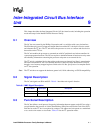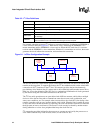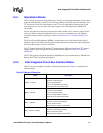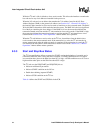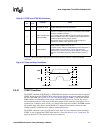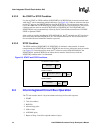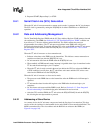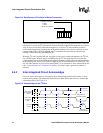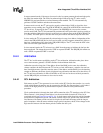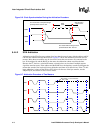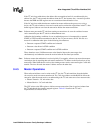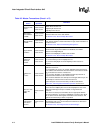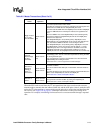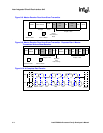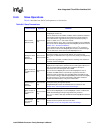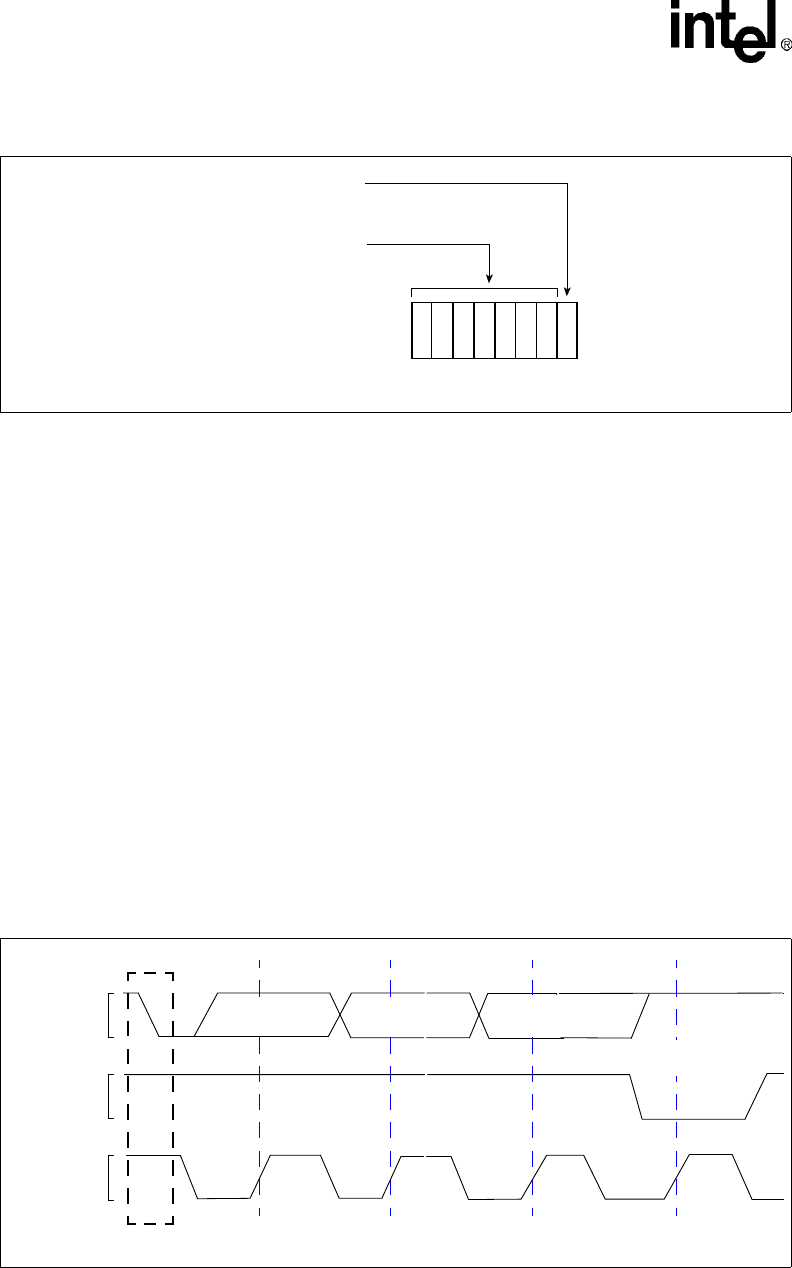
9-8 Intel® PXA26x Processor Family Developer’s Manual
Inter-Integrated Circuit Bus Interface Unit
The first byte transmission must be followed by an ACK pulse from the addressed slave. When the
transaction is a write, the I
2
C unit remains in master-transmit mode and the addressed slave device
stays in slave-receive mode. When the transaction is a read, the I
2
C unit transitions to master-
receive mode immediately following the ACK and the addressed slave device transitions to slave-
transmit mode. When a NAK is returned, the I
2
C unit aborts the transaction by automatically
sending a STOP and setting the ISR[BED] bit.
When the I
2
C unit is enabled and idle, it remains in slave-receive mode and monitors the I
2
C bus
for a START signal. When it detects a START pulse, the I
2
C unit reads the first seven bits and
compares them to those in the ISAR and the general call address (0x00). When the bits match those
in the ISAR register, the I
2
C unit reads the eighth bit (R/nW bit) and transmits an ACK pulse. The
I
2
C unit either remains in slave-receive mode (R/nW = 0) or transitions to slave-transmit mode (R/
nW = 1). See Section 9.4.7, “General Call Address” for actions when a general call address is
detected.
9.4.3 Inter-Integrated Circuit Acknowledge
Every I
2
C byte transfer must be accompanied by an acknowledge pulse that the master- or slave-
receiver must generate. The transmitter must release the SDA line for the receiver to transmit the
acknowledge pulse (see Figure 9-5).
Figure 9-4. Data Format of First Byte in Master Transaction
0
7-Bit I2C Slave Address
7
Read/Write Transaction
MSB
LSB
(0) Write
(1) Read
Figure 9-5. Acknowledge on the I
2
C Bus
1
2-7
8
9
SCL from
Master
Data Output
by Receiver
Data Output
by Transmitter
Clock Pulse
for Acknowledge
SDA released
SDA pulled low
by Receiver (ACK)
Start Condition
∼
∼
∼
∼
∼
∼
∼
∼
(SDA)
(SDA)




